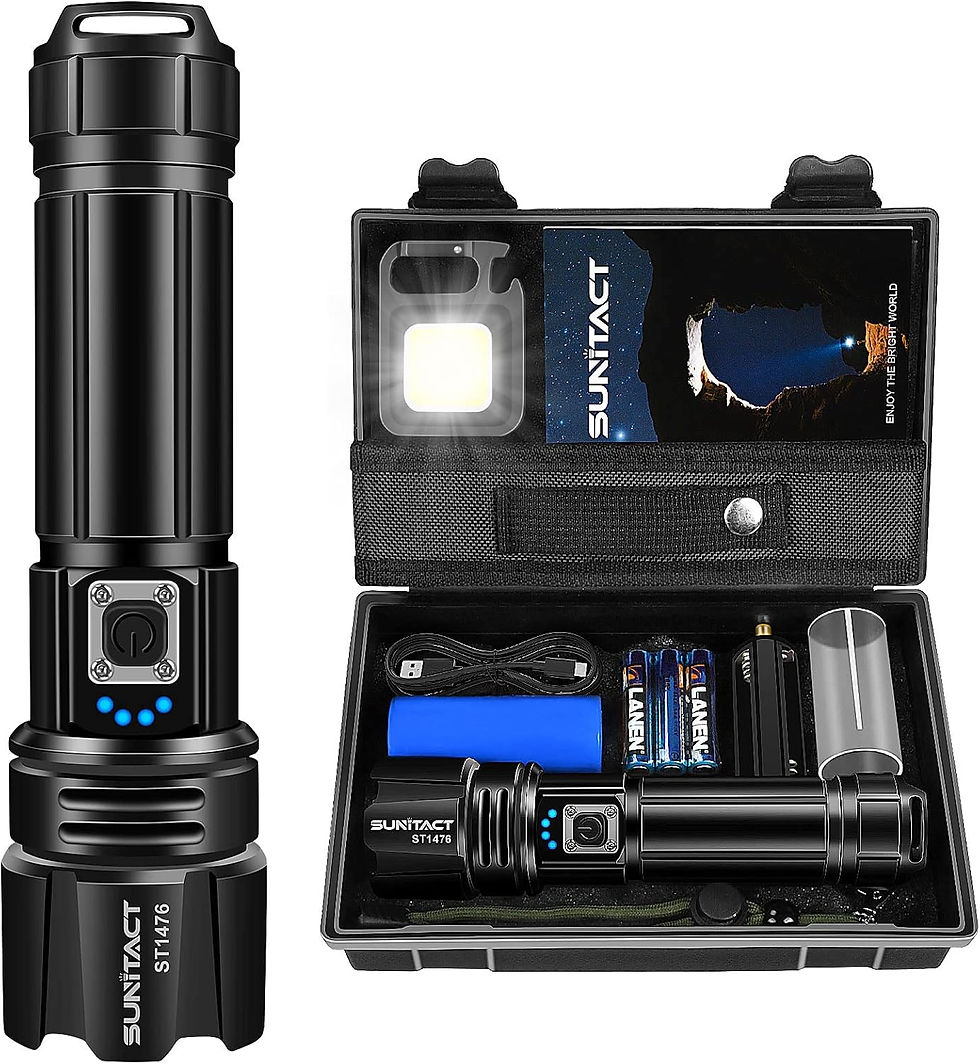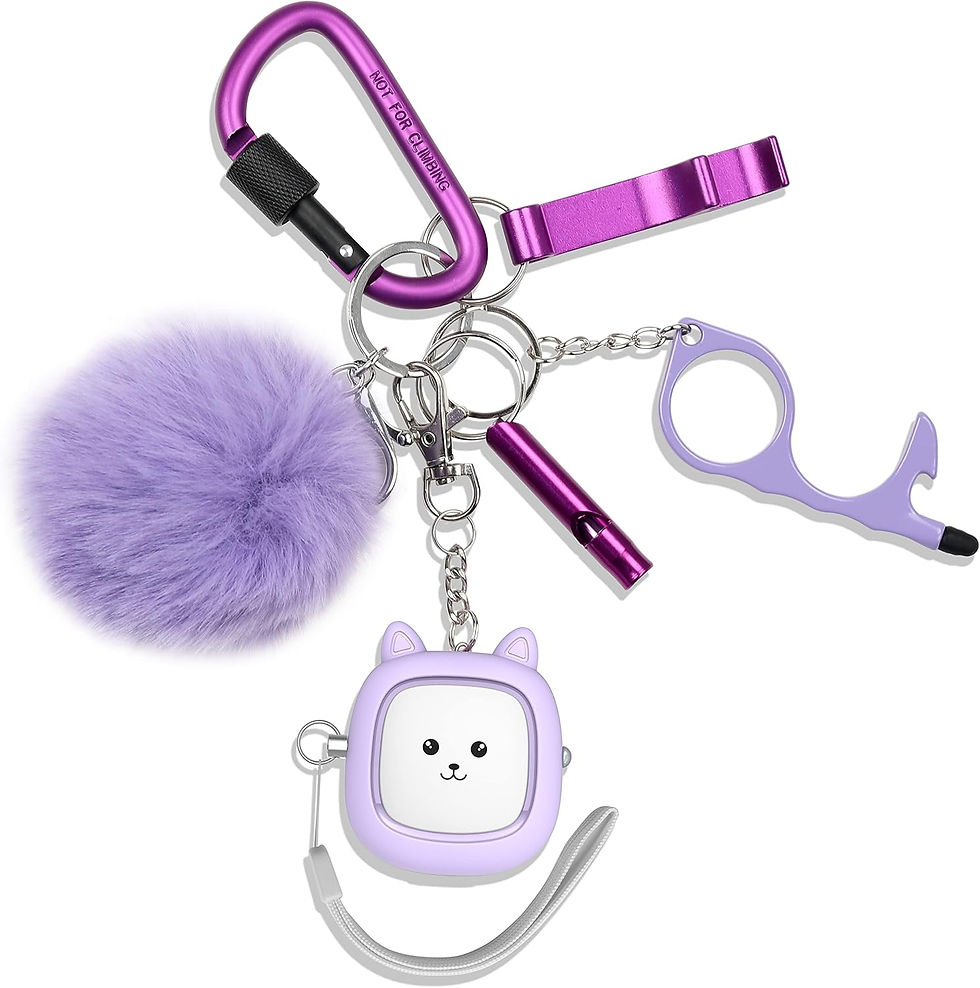Self-Defense 101: A Beginner Guide for Staying Safe In Canada
- staysafevancouver
- Jan 25
- 7 min read
Welcome to your guide on self-defense in Canada.
This guide is not here to sugarcoat things or feed you comforting lies.
It’s about reality — the kind that demands action, preparation, and the courage to protect yourself in an unpredictable world.
Self-defense isn’t just about learning techniques; it’s about transforming your mindset into one of readiness and resilience.
Here’s what we'll go over:
How to sharpen your situational awareness.
Spot a predator.
Best tools you can legally carry in Canada.
Self-defense laws and your rights.
Before we dive in, since it's probably your first time here, let me introduce myself.
I’m Jenna. Being 5’1” and petite, I never felt like someone who could handle herself in a bad situation. Every late night walk home was a mental battle. I’d tell myself, “Just get home quickly" and I always looking over my shoulder, second-guessing my safety.
One evening, my fears became real. Someone followed me to my car. I felt that paralyzing fear, but instead of freezing, I grabbed the safety alarm I carried, pressed it, and let its piercing sound do the work. The man bolted.
That night, I realized strength isn’t about size or physical dominance; it’s about preparation and taking action.
Since then, I’ve made it my mission to learn everything I can about personal safety and share it with others.
In this guide, I’ll teach you how to protect yourself, spot a predator, and develop the skills that make all the difference.
Let's get started.
Self-Defense 101 In Canada

Step 1: Let's Develop Situational Awareness
Most people walk around in a fog, glued to their phones or lost in thought. Predators notice that. They rely on people being distracted or unaware, which is why the first rule of self-defense is situational awareness—paying attention to your environment.
Posture and Confidence: Walk like you mean business. Keep your shoulders back, head up, and stride with purpose. Predators avoid targets that look alert and confident.
Eye Contact: Look people in the eye. It’s not about intimidation; it’s about signaling that you see them, that you’re paying attention.
Scan Your Surroundings: Always be aware of exits, people around you, and potential risks like poorly lit areas or loiterers.
Trust Your Instincts: If something feels off, it probably is. Don’t ignore that gut feeling.
Step 2: Equip Yourself with the Best Self-Defense Tools
In Canada, you cannot legally carry anything for the purpose of defending yourself. Intent matters.
But - if you happen to be carrying something and use it as a weapon of opportunity, then you have grounds. Think of a baseball, a metal water bottle or another heavy item like a skateboard that you are carrying around.
If you’re carrying a baseball on your way home from a game, and use the bat as a weapon of opportunity against an attacker, then you're OK since you had the bat with you for the purpose of a baseball game.
Here are some legal, practical tools to consider:
These sprays are illegal to carry for self-defense against another human, but you can carry them for animal defense. If you are stopped by a police officer, remember you are not carrying this spray for defense against another person. You have it on you because you are about to camping or hunting or hiking - and you need it for bear attacks or (ahem) wildlife.
Be aware of their limitations and legal implications.
Loud, attention-grabbing devices that scare off attackers and attract help.
Legal everywhere in Canada and ideal for non-lethal protection.
Disorient your attacker with a tactical flashlight. Once you temporarily blind an attacker, this gives you a chance to escape.
A compact, discreet tool designed to fit on your keyring, often with pointed edges for close-contact defense.
You can all tool suggestions in this guide: 10 Self Defense Tools You Can Legally Carry In Canada

Step 3: Understand Predator Psychology
Predators operate with a keen sense of situational awareness. They are adept at identifying isolated individuals, distracted targets, or environments that minimize the chance of intervention.
A predator’s primary goal is to fulfill their intentions with minimal risk to themselves.
They exploit common human tendencies, such as politeness, the reluctance to offend, or the hesitation to act on gut instincts. For instance, a predator might appear non-threatening by using charm or humor.
Recognize these red flags. Have you ever been in one of these scenarios and felt that something was "off" with that person, but you ignored that feeling?
Over-Friendly Behavior: A stranger at your apartment building might strike up a friendly conversation, insisting on holding the door open for you even after you’ve politely declined. Or, they might claim to have forgotten their keys and ask you to let them in, preying on your politeness to bypass security and gain unauthorized entry.
Exploiting Politeness: Imagine someone offers to carry your groceries to your apartment. It seems kind, but if they are insistent despite your refusal, they’re testing boundaries, not to mention trying to get access to your apartment. Trust your instincts and stand firm. Many victims report feeling uncomfortable or uneasy before an attack but ignore these feelings to avoid seeming rude.
Picking Someone Distracted: Predators are looking for easy prey—someone distracted, with their earbuds in, or someone who becomes hesitant, is physically weaker than them or someone too polite to raise their voice.
Creating False Urgency: A stranger tells you there’s an issue with your car, trying to fluster you while closing the distance. A stranger might approach you in a parking lot or gas station with an urgent claim, such as saying your car tire looks dangerously low or they noticed something leaking from your vehicle. This tactic is designed to make you feel flustered and reliant on their assistance.
Isolation Attempts: Predators may try to lure you to a less crowded area under some pretext. Always stay in well-lit, populated areas.
Red Flags to Watch For:
Persistence: They continue to insist on helping despite your refusal.
Proximity: They stand too close, invading your personal space.
Distraction Tactics: They try to focus your attention elsewhere, such as on your car, while positioning themselves advantageously.
Unfamiliar Behavior: They suggest solutions or actions that seem overly complex or unnecessary for the supposed issue.
Isolation Attempts: They attempt to guide you to a less visible area under the guise of helping you.
Step 4: Learn To Fight
Men and women alike will benefit immensely from fight training, particularly Jiu-Jitsu, and will teach you how to control a confrontation.
As a woman, you might often feel torn between two extremes: convincing yourself you could handle an attacker, or assuming you’d freeze and have no chance. The truth lies somewhere in the middle. If you learn jiu jitsu, you will have a real chance. Couple that with your social awareness, intuition and situational awareness, and you'll be powerful.
As a man, you might have greater physical strength on average, that alone isn’t enough. You also need to unlock the repressed predator inside you and realize you are a natural born fighter. You've probably been taught to repress your aggression when it should be wielded for protection of yourself and your family.
Traditional, basic self-defense classes that are taught by police officers and so forth over 8 weeks don't really work. But no one is going to tell you that because the alternative is having to learn an actual martial arts like jiu-jitsu. And that is difficult.
As I said earlier, it takes time to learn a martial arts. In the meant time, here are some simple techniques focus on creating space between you and an attacker and finding opportunities to escape:
The best self-defense techniques (for now):
Push Up with Your Hips: Use your body weight (really important for women) to push someone off you. If someone is lying on top of you, immediately wrap your legs around their waist or hips. This helps you gain control and limits their movement.
Bend your knees, plant your feet firmly on the ground, and push your hips upward with force. This sudden motion disrupts their balance and can make them lose control or fall forward.
Breaking Free from Grabs: If they are lying on top of you, wrap your legs around them and push up with your hips and leverage to escape wrist or arm holds by targeting weak points, like the attacker’s thumb.
Palm Strikes and Knee Strikes: Focus on vulnerable areas like the eyes, groin, nose, chin, or groin. These moves don’t require immense strength but can momentarily disable an attacker.

Step 5: Know Your Rights in Canada
Predators don’t follow rules, but you have to. Canadian law emphasizes that self-defense must be a last resort, and any force used must be proportional to the threat you face. Here are the key aspects:
Self-Defense Under the Criminal Code: Section 34 of the Canadian Criminal Code allows individuals to use force to protect themselves or others, but only if they reasonably believe force is being used against them or a threat of force exists. The response must be proportional to the threat.
Proportionality: The level of force you use must match the situation. For example, using a weapon against an unarmed individual might be deemed excessive and could result in legal consequences.
Weapons of Opportunity: Carrying an item specifically for self-defense (e.g., brass knuckles or a knife) is illegal in Canada. However, everyday objects like keys, a purse, or even a pen can be used defensively if the situation calls for it and your life is in immediate danger.
Reasonable Belief: Your actions will be evaluated based on what a reasonable person would do in the same circumstances. This includes considering factors like the severity of the threat, the attacker’s behavior, and whether you attempted to de-escalate the situation.
Duty to Retreat: While not explicitly stated in Canadian law, courts often consider whether you had an opportunity to retreat or avoid the confrontation entirely. Escaping the situation safely is always preferred.
Aftermath and Reporting: If you do act in self-defense, contact law enforcement immediately after the incident. Be clear and factual when explaining what happened, focusing on the threat you faced and how you responded to protect yourself.
What’s Next? Take Control of Your Safety
Now that you’ve got the knowledge, it’s time to put it into practice. You’ve learned the importance of awareness, the techniques to defend yourself, and the tools to carry with confidence.
Here’s your next step:
Explore More Resources: Dive into additional guides, like 10 Self Defense Tools You Can Legally Carry In Canada or Best Bear Sprays To Defend Yourself (Legal In Canada)
Join the Community: Stay connected and sign up for updates and tips directly to your inbox.
Your safety journey starts now. Don’t just read about it—live it, act on it, and share it with someone who needs it. You’re stronger than you think, and the first step is deciding to take control.
Whatever you do, I wish you luck.
Stay safe.
Jenna.




Comments